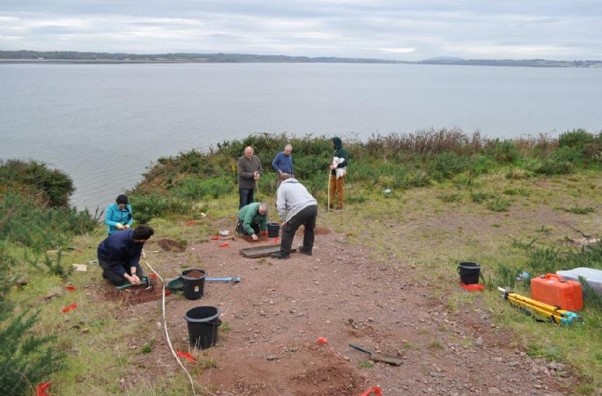2016:790 - CREADAN: Creadan Head, Waterford
County: Waterford
Site name: CREADAN: Creadan Head
Sites and Monuments Record No.: N/A
Licence number: 16E0536
Author: Jacinta Kiely, Eachtra Archaeological Projects Ltd, for Peter Woodman, RIP
Author/Organisation Address: Eachtra Archaeological Projects, Ballycurreen Industrial Estate, Kinsale Road, Cork.
Site type: Prehistoric site - lithic scatter
Period/Dating: Prehistoric (12700 BC-AD 400)
ITM: E 671509m, N 603640m
Latitude, Longitude (decimal degrees): 52.179928, -6.954380
Testing was undertaken on Creadan Head on the western side of Waterford Harbour, by Professor Peter Woodman, to investigate the site of the recovery of an assemblage of lithics by Noel McDonagh from the general Creadan Head area. Professor Woodman died unexpectedly in January 2017 shortly after the excavation took place and before the excavation report could be completed. Creadan Head Advisory Board was set up in 2019 under the chair of Joy Rooney, Waterford Institute of Technology. It is made up of representatives from several bodies and includes Jacinta Kiely, consultant archaeologist, appointed by Waterford City and County Council. The excavation report was compiled by Jacinta Kiely, with the permission of Prof. Woodman’s family, to fulfil the statutory requirements of the licence granted by the National Monuments Service.
The Creadan Head project was initiated by Noel McDonagh who has collected a large assemblage of lithics from field walking in the area. Prof. Woodman’s interest was piqued by the material Noel McDonagh had collected and he decided to excavate test pits to investigate an archaeological horizon visible in a newly cleared cutting near the northern edge of the cliff at Creadan Head. Creadan Head is on the western side of Waterford Harbour. Dunmore East is located 4 km to the south.
Six test pits (numbered A–F) were excavated on the northern side of Creadan Head in a newly cleared cutting created by the landowner. The test pits were located within an area measuring approximately 20m x 10m and within 15m of the cliff face. The ground slopes to the north towards the cliff face. The larger test pits A–D measured approximately 1m2 and test pits E and F were smaller. The lithics recovered from the site were examined by Claire Anderson in conjunction with a set of Prof. Woodman’s handwritten field notes. In her discussion Anderson states that the material under consideration would suggest an early/early-middle Mesolithic date (c. 10,000–8500 BP) for this assemblage As an early assemblage this material represents a very important contribution to our knowledge of lithic technology and society in the early-middle Mesolithic in Ireland and certainly suggest a very interesting and unusual site which clearly merits further detailed investigation and full site investigation.

